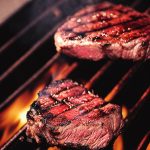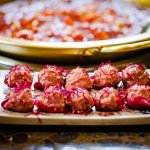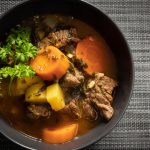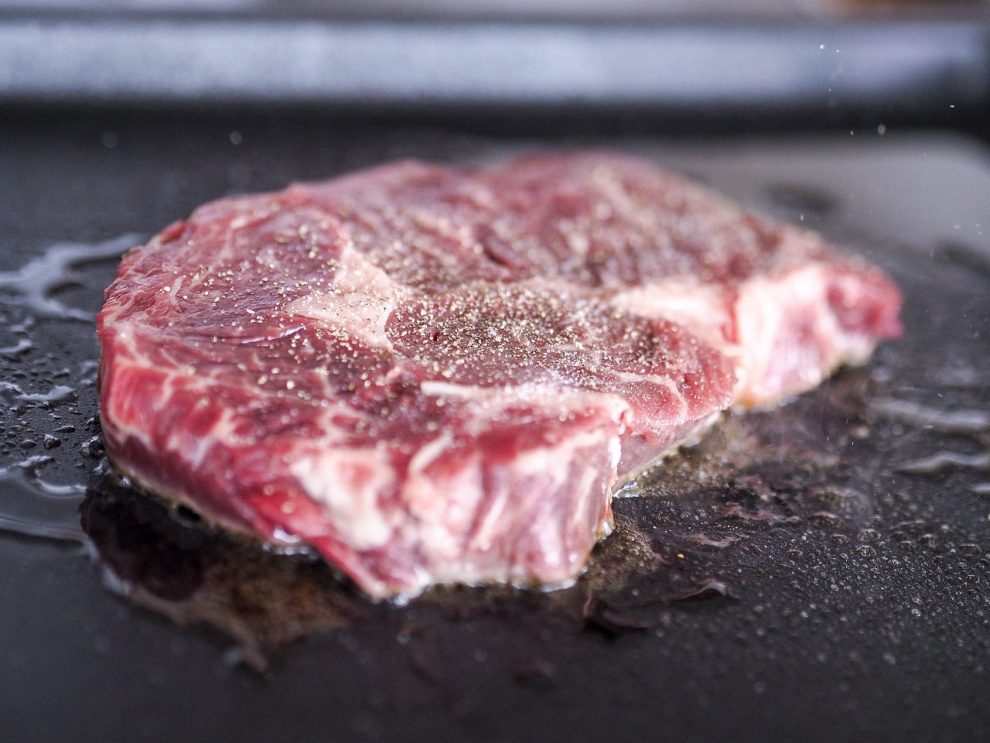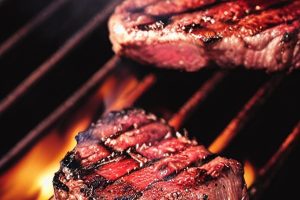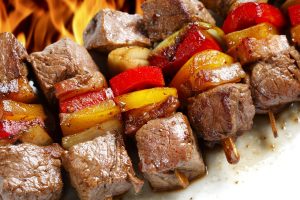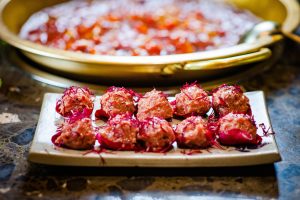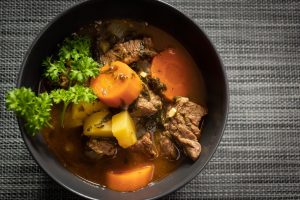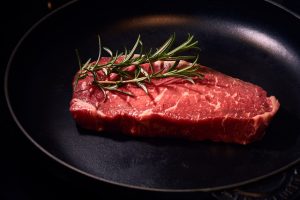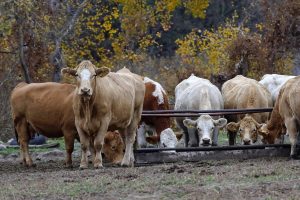From Ancient China to Modern Cuisine: Unveiling the Roots of Moo Shu Beef
From Ancient China to Modern Cuisine: Unveiling the Roots of Moo Shu Beef
Analytical
Moo Shu Beef, a beloved dish enjoyed by millions around the world, has a rich history deeply rooted in ancient Chinese cuisine. By examining the origins and evolution of this delectable dish, we can gain insight into the culinary traditions that have shaped not only Moo Shu Beef but also the broader landscape of modern cuisine.
The story begins in ancient China, where food was not merely sustenance but also an integral part of the cultural fabric. The Chinese believed that food had the power to nourish the body, balance the yin and yang energies, and promote overall well-being. This belief laid the foundation for the intricate flavors and techniques that characterize Chinese cuisine.
Moo Shu Beef, as we know it today, traces its origins back to the Northern and Southern dynasties (420-589 AD). During this period, Chinese chefs were already experimenting with different combinations of ingredients and cooking methods. The dish’s name, “moo shu,” is derived from the Chinese word for “wood shavings,” which refers to the thin slices of meat traditionally used in the dish.
The key components of Moo Shu Beef include thinly sliced beef, wood ear mushrooms, bamboo shoots, and scallions, all stir-fried together with a flavorful sauce. This combination of ingredients creates a harmonious blend of textures and tastes, showcasing the Chinese philosophy of balancing flavors and textures in a single dish.
Over time, as trade routes expanded and cultural exchanges took place, the recipe for Moo Shu Beef evolved. Influences from neighboring regions, such as Mongolia and Korea, added new ingredients and cooking techniques to the mix. For example, the use of pancakes to wrap the stir-fried filling is believed to have been influenced by Mongolian cuisine, where pancakes are a staple.
In the 20th century, as Chinese immigrants settled in various parts of the world, they brought their culinary traditions with them, including Moo Shu Beef. This dish quickly gained popularity in Chinese restaurants outside of China, particularly in the United States. However, with globalization and the fusion of cuisines, variations of Moo Shu Beef have emerged, incorporating local ingredients and flavors.
Today, Moo Shu Beef continues to captivate palates with its unique blend of flavors and textures. Its journey from ancient China to modern cuisine is a testament to the enduring appeal of Chinese culinary traditions. By embracing the roots of this dish, we can not only savor its deliciousness but also gain a deeper understanding of the cultural heritage that has shaped our global culinary landscape.
Inspirational
From Ancient China to Modern Cuisine: Unveiling the Roots of Moo Shu Beef
Prepare to embark on a culinary journey that will ignite your taste buds and inspire your soul. Moo Shu Beef, a dish with a history as vibrant as its flavors, takes us back to the ancient roots of Chinese cuisine. Let us explore the rich tapestry of flavors and traditions that have shaped this beloved dish, and discover how it continues to captivate hearts and palates around the world.
In the depths of ancient China, food was revered as a source of nourishment for the body and spirit. The Chinese believed that each ingredient possessed unique qualities that could harmonize the yin and yang energies within us. This belief gave rise to the intricate flavors and cooking techniques that define Chinese cuisine, and it is within this culinary landscape that Moo
A Culinary Journey: Exploring the Historical Evolution of Moo Shu Beef
Moo Shu Beef is a beloved dish in Chinese cuisine, with its origins deeply rooted in history. This culinary delight has evolved over time, reflecting the cultural and societal changes of the Chinese people. By exploring the historical evolution of Moo Shu Beef, we can gain a deeper understanding of the dish’s significance and appreciate the artistry behind its creation.
In its early days, Moo Shu Beef was known as “mu xie niu rou” in Mandarin, which translates to “wood ear mushrooms with beef.” This name was derived from the primary ingredients of the dish, highlighting the importance of these elements in its preparation. Wood ear mushrooms, also known as black fungus, were commonly used in Chinese cooking due to their unique texture and health benefits.
During the Ming Dynasty (1368-1644), the dish underwent significant changes. It was during this time that the use of pancakes, or “bing,” became popular in Chinese cuisine. These thin, unleavened breads were made from wheat flour and water, and they provided a perfect vessel for wrapping the juicy beef and mushrooms. This addition transformed the dish into what we now recognize as Moo Shu Beef.
As China entered the Qing Dynasty (1644-1912), the culinary landscape continued to evolve. The introduction of soy sauce and hoisin sauce added depth and complexity to the flavors of Moo Shu Beef. Soy sauce, made from fermented soybeans, provided a rich umami taste, while hoisin sauce, a sweet and savory condiment, added a delightful contrast of flavors. These sauces became integral components of the dish, enhancing its overall taste profile.
In the modern era, Moo Shu Beef has become a staple in Chinese-American cuisine. As Chinese immigrants settled in the United States, they adapted their traditional recipes to suit the ingredients available to them. This led to the inclusion of additional vegetables such as cabbage, carrots, and bean sprouts in the dish. These additions not only added color and texture but also enhanced the nutritional value of the meal.
The historical evolution of Moo Shu Beef showcases the ingenuity and adaptability of Chinese cuisine. It is a testament to the creativity of generations past, who continuously refined and enhanced the dish to suit their changing tastes and circumstances. Today, Moo Shu Beef stands as a symbol of cultural pride and culinary excellence, inspiring chefs and food enthusiasts around the world.
In conclusion, the journey of Moo Shu Beef is a fascinating exploration of history, culture, and gastronomy. From its humble beginnings as “wood ear mushrooms with beef” to its modern incarnation as a flavorful and nutritious dish, Moo Shu Beef has captivated the palates and hearts of people for centuries. Its evolution highlights the resilience and creativity of Chinese cuisine, reminding us of the beauty and significance of culinary traditions. So, the next time you savor a plate of Moo Shu Beef, take a moment to appreciate the historical journey that brought this delectable dish to your table.
The Origins of Moo Shu Beef: Unraveling the Ancient Chinese Traditions
The Origins of Moo Shu Beef: Unraveling the Ancient Chinese Traditions
Analytical
Moo Shu Beef, a beloved Chinese dish, has a rich history that traces back centuries. Unraveling the origins of this delectable meal requires a deep dive into ancient Chinese traditions and culinary practices. By examining the historical context and cultural significance of Moo Shu Beef, we can gain a greater appreciation for the dish and understand its journey from the past to the present.
To truly understand the origins of Moo Shu Beef, we must first explore the culinary traditions of ancient China. Chinese cuisine is known for its emphasis on balance, harmony, and the use of fresh ingredients. The art of stir-frying, which is a key component of Moo Shu Beef, has been practiced in China for thousands of years. This cooking technique involves quickly cooking ingredients over high heat, preserving their flavors and textures. Stir-frying was not only a practical way to cook food quickly in ancient China, but it also highlighted the Chinese philosophy of Yin and Yang, the concept of balancing opposites.
Moo Shu Beef itself can be traced back to the northern regions of China, where it originated during the Ming Dynasty (1368-1644). This dish was initially reserved for the royal court and was prepared with utmost care and precision. The beef used in Moo Shu Beef was carefully selected, marinated, and stir-fried to perfection. The dish was then wrapped in thin pancakes made from wheat flour, adding a unique texture and taste. The inclusion of vegetables, such as cabbage, mushrooms, and carrots, provided both flavor and nutritional balance.
The cultural significance of Moo Shu Beef cannot be overlooked. In ancient China, food was not merely sustenance but an integral part of daily life and social gatherings. The preparation and consumption of food were seen as a way to connect with one’s ancestors and maintain cultural traditions. Moo Shu Beef was often served during special occasions and festivals, symbolizing prosperity, abundance, and good fortune.
Fast forward to the present day, and Moo Shu Beef has become a staple dish in Chinese-American cuisine. The migration of Chinese immigrants to the United States during the 19th and early 20th centuries brought this traditional dish to a new audience. As Chinese cuisine adapted to suit the American palate, variations of Moo Shu Beef emerged, incorporating local ingredients and flavors. Today, Moo Shu Beef is enjoyed by people of all backgrounds, highlighting the cultural diversity and culinary fusion that define modern society.
Inspirational
The story of Moo Shu Beef is a testament to the power of culinary traditions and their ability to transcend time and borders. Through centuries of cultural exchange and adaptation, this dish has evolved into a symbol of unity and diversity. It reminds us of the importance of preserving our ancestral heritage while embracing new flavors and ingredients.
The ancient Chinese traditions that gave birth to Moo Shu Beef teach us valuable lessons about balance, harmony, and the art of cooking. They remind us to savor each ingredient, to appreciate the delicate dance of flavors, and to find joy in the act of nourishing ourselves and others.
Moo Shu Beef serves as a reminder that food is not just sustenance but a medium for cultural expression and connection. It bridges the gap between generations, allowing us to honor our ancestors and pass on their traditions to future generations. It is a dish that brings people together, fostering a sense of community and celebration
Moo Shu Beef Through the Centuries: Tracing its Transformation and Adaptation
Moo Shu Beef Through the Centuries: Tracing its Transformation and Adaptation
Analytical
Introduction:
Moo Shu Beef is a classic Chinese dish that has stood the test of time, delighting taste buds across generations. This paper aims to analyze the transformation and adaptation of Moo Shu Beef throughout the centuries, exploring the factors that have influenced its evolution and highlighting its significance in culinary history.
Historical Background:
To understand the journey of Moo Shu Beef, we must delve into its historical roots. Originating in Northern China during the Han Dynasty, this dish was initially prepared with pork, mushrooms, and cabbage, wrapped in thin pancakes made from wheat flour. It quickly gained popularity among local communities as a delicious and convenient meal.
Transformation:
As time passed, Moo Shu Beef underwent several transformations, adapting to changing tastes and influences from various regions. During the Tang Dynasty, beef was introduced as an alternative protein source, replacing pork in some variations of the dish. This modification allowed for a wider range of flavors and catered to the preferences of those who preferred beef over pork.
Inspirational Influence:
The inspirational aspect of Moo Shu Beef lies in its ability to adapt and incorporate new ingredients and techniques from different culinary traditions. As trade routes expanded during the Ming and Qing Dynasties, the dish absorbed influences from neighboring countries, such as Mongolia and Korea. Mongolian influence introduced the use of scallions and hoisin sauce, adding a savory and tangy flavor to the dish. Similarly, Korean influence brought in the technique of stir-frying, enhancing the dish’s texture and taste.
Modern Adaptations:
In the modern era, Moo Shu Beef has continued to evolve, adapting to international palates and dietary preferences. With increased globalization, variations of this dish have emerged to cater to vegetarian and vegan diets, with tofu being used as a substitute for meat. Additionally, fusion versions have been created, combining elements of Moo Shu Beef with ingredients and flavors from other cuisines, such as Mexican or Thai.
Conclusion:
The transformation and adaptation of Moo Shu Beef throughout the centuries exemplify the dynamic nature of culinary traditions. From its humble beginnings in Northern China to its global popularity today, this dish has consistently evolved to meet the changing demands of diverse cultures and tastes. Its ability to incorporate new flavors and techniques showcases the inspirational nature of culinary creativity. By tracing the journey of Moo Shu Beef, we gain a deeper appreciation for the rich tapestry of culinary history and the importance of embracing innovation while preserving tradition.
From Classic Dish to International Favorite: The Global Influence of Moo Shu Beef
From its humble beginnings as a classic dish in Chinese cuisine, Moo Shu Beef has evolved into an international favorite, captivating taste buds around the world. This transformation is not only a testament to the dish’s delicious flavors but also to the global influence of culinary traditions.
Analytically, we can observe how the popularity of Moo Shu Beef has spread beyond the borders of China. The dish’s journey began in the northern regions of China, where it was traditionally made with thinly sliced beef, mushrooms, and various vegetables. As Chinese immigrants ventured to different parts of the world, they brought their culinary heritage with them, including the beloved Moo Shu Beef recipe.
The inspirational aspect lies in how this dish has transcended cultural boundaries and adapted to suit different palates. In the United States, for example, Moo Shu Beef has become a staple in Chinese-American cuisine, often served with flour pancakes and hoisin sauce for a delicious wrap. This fusion of flavors showcases the adaptability of traditional dishes and the creativity of chefs in embracing new ingredients and techniques.
Furthermore, as international travel and globalization have become more prominent, Moo Shu Beef has gained popularity in countries far beyond China and the United States. In Europe, for instance, it has become a sought-after dish in upscale Asian fusion restaurants, combining the best of Eastern and Western culinary traditions. Chefs experiment with different cuts of beef, incorporate local vegetables, and even add their own unique twists to elevate the flavor profile.
The global influence of Moo Shu Beef also extends to its inclusion in international cooking competitions and food festivals. Its versatility allows it to be showcased alongside other global favorites, demonstrating its ability to hold its own among a diverse range of cuisines.
This story of Moo Shu Beef’s journey from a classic Chinese dish to an international favorite is truly inspirational. It highlights the power of culinary traditions to bridge cultures and bring people together through a shared love for flavorful and satisfying food. As we continue to explore and appreciate the world’s diverse cuisines, let us remember the global influence of dishes like Moo Shu Beef, reminding us of the beauty and unity found in our shared culinary experiences.
